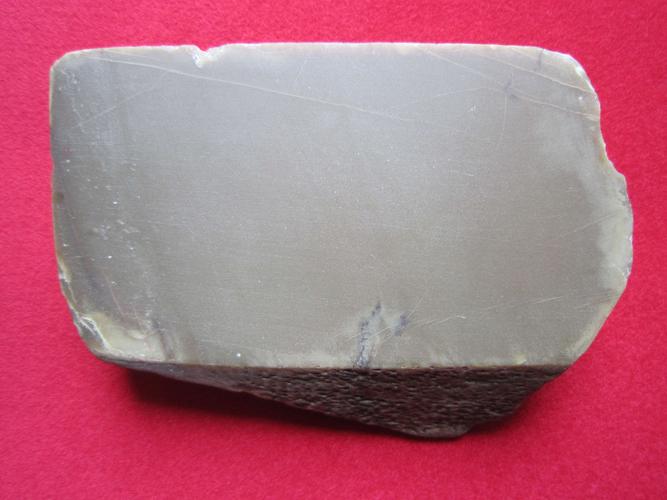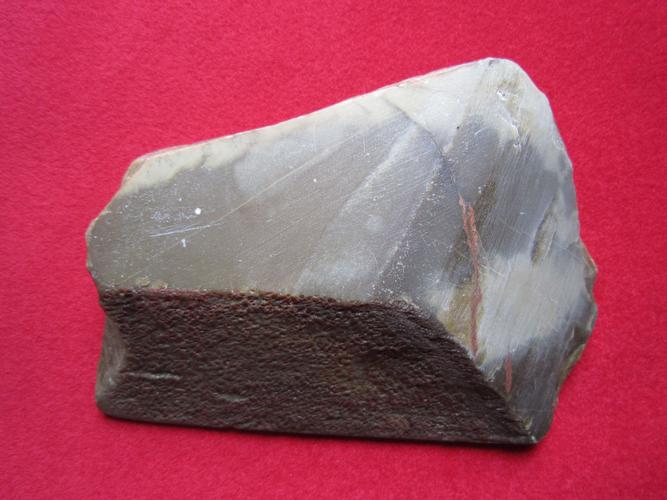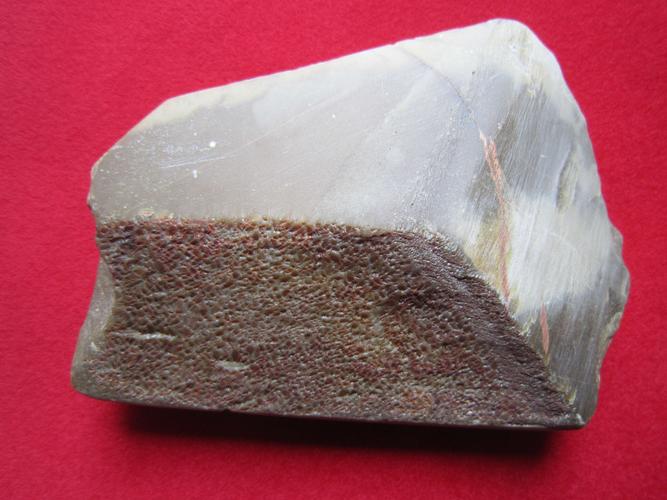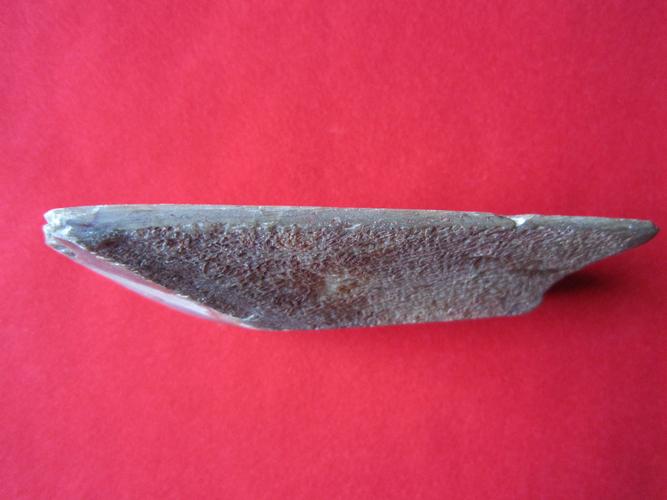Results 1 to 10 of 41
Hybrid View
-
08-18-2013, 01:41 PM #1
 Question to the natural stone experts
Question to the natural stone experts
Which stone is this:




Any idea anyone? Any other stones like this out there?
-
08-18-2013, 04:29 PM #2

Is it not an Escher or Thuringan ? Looks like it to me.

-
08-18-2013, 04:39 PM #3Senior Member


- Join Date
- Jan 2011
- Location
- Roseville,Kali
- Posts
- 10,432
Thanked: 2027
Indian love stone??
-
08-18-2013, 04:41 PM #4

It is a very hard stone compared to the Escher/Thuringian waterwhetstones. More like Novaculite. Can be used with water or oil. However not a japanese nor a CF/LI and not an ark.
-
08-18-2013, 05:11 PM #5Senior Member



- Join Date
- Apr 2008
- Location
- Essex, UK
- Posts
- 3,816
Thanked: 3164
It looks like it shares some of the features of a turkey oilstone - one that has not been seasoned in oil. Like one of the 'new' ones. The colurs, fractures and colouration in the crack are reminiscent of the exaples I have. They are very hard and have similar looking skin, sometimes with small holes like bubbles, and fissures.
Its hard to tell from such a small piece, though.
Vasilis would know better than me.
Regards,
NeilLast edited by Neil Miller; 08-18-2013 at 05:24 PM. Reason: lots of typos - damn tablet pc!
-
08-18-2013, 05:24 PM #6

Good guess Neil, thanks for the answer. But the stone is not a turkey stone!
These kind of stones were very well know in the middle ages. They were found in a lot of old middle age centres, also in Haitabu, which was a famous trading centre of the vikings in the 9-11th century.
Also they are found in some celtic opidums which existed more than 2000 years in the past.
The stones were mined constantly until WW1 and fewer till WW2 as the quarries were carried to end.
-
08-18-2013, 05:47 PM #7Senior Member



- Join Date
- Apr 2008
- Location
- Essex, UK
- Posts
- 3,816
Thanked: 3164
That is why I said one of the new ones, Hatzicho.
They are not quite the same as the old ones - the old ones seem finer, but once seasoned in olive oil they look quite similar. 'New' just means new source, the stone themselves are ancient, of course.
I have a number of the vintage ones and several new ones from Vasilis - he found a supplier, and a lot of people on the coticule forum use them in conjunction with a coticule.
Unlike the vintage type, these ones are at the bevel-setting end of the spectrum, but benefit from a slurry (extremely hard to make without a diamond hone) which breaks down so you can get to mid level before finishing with a coticule.
There are, as we know, many types of this stone from many regions, none of which can be traced back to a turkish origin, except perhaps by way of trade routes. Ther has been extensive discussion on this forum in the past about them and their origins, for anyone who cares to use the search function (which I find quite unreliable, BTW).
As I say, Vasilis is very qualified to tell us more about the 'new' turkish hones (or turkey oilstones, or cretan hones, or candia hones or ex-ottoman empire hones or whatever else people want t call them! )
)
Regards,
NeilLast edited by Neil Miller; 08-18-2013 at 05:50 PM.


 43Likes
43Likes LinkBack URL
LinkBack URL About LinkBacks
About LinkBacks






 Reply With Quote
Reply With Quote